Mad Hedge Technology Letter
March 15, 2023
Fiat Lux
Featured Trade:
(THE UNKNOWN IN THE DIGITAL AD SPACE)
(NFLX), (WBD), (DIS), (CMCSA), (ROKU)

Mad Hedge Technology Letter
March 15, 2023
Fiat Lux
Featured Trade:
(THE UNKNOWN IN THE DIGITAL AD SPACE)
(NFLX), (WBD), (DIS), (CMCSA), (ROKU)

The uncertain digital advertising environment has been a thorn in the side of legacy media giants for quite some time.
Companies from Comcast (CMCSA) to Warner Bros. Discovery (WBD) are feeling the pressure as profitability struggles pile up.
Unfavorable macroeconomic headwinds coupled with decreased ad budgets amid a decline in linear TV and digital search trends put the ad market through the wringer in 2022.
Recent ad market softness comes as media giants like Disney (DIS) and Netflix (NFLX) have embraced ad-supported streaming alternatives as the race for eyeballs escalate.
Disney's direct-to-consumer division lost an eye-popping $4 billion-plus in 2022.
Warner Bros Discovery is now targeting $4 billion in cost savings over the next two years.
Advertising revenue within NBCUniversal's media division increased by 4% in Q4 because of a boost from the incremental revenue from the FIFA World Cup.
Looking ahead, the lack of brand name events in 2023 such as the World Cup, Olympics, or U.S. midterm elections, will likely be a drag on ad spend in 2023.
Those events greatly aided the battered industry with the domestic ad market totaling $318 billion last year — an increase of 8% compared to 2021.
Similarly, Spotify (SPOT) CFO Paul Vogel told investors during the latest earnings call: "Advertising in Q4, overall, it's definitely continued to be very up and down."
Spotify's Q4 ad-supported revenue, boosted by podcasting, grew 14% on a year-over-year basis to €449 million — accounting for 14% of total revenue.
Disney and Netflix rolled out their ad tier products at a time when the ad market is in flux, but the move seems to have been a lucrative one.
At the time of the debut, the company said over 100 advertisers bought inventory for the launch — bucking the trend of a global ad spend slowdown.
Similar to Disney, Netflix is playing the long game when it comes to its recently launched ad-supported tier, which officially debuted in November.
In its latest shareholder letter, Netflix said engagement for ad-supported subscribers "is consistent with members on comparable ad-free plans, is better than what we had expected, and we believe the lower price point is driving incremental membership growth."
Investors should run to higher grounds to avoid the upcoming slaughter in legacy media.
The cord cutter phenomenon is real and the pivot to work-from-home culture has really stuck the fork in many traditional services that used to be part of American culture.
Legacy media is one of the big losers – nobody watches analog television anymore.
Investors will need to seek attractive properties such as NFLX to buy the dip.
They benefit from the first mover advantage, but Disney is also finding their way after firing former CEO Bob Chapek and replacing him with the guy before him - Bob Iger. It’s not a pure streaming play which is also an issue for the likes of Amazon and I do think Roku is a little too growth based at this point in the business cycle.
The overall message is to avoid unproven tech assets for the time being with bank turmoil and interest rate tumult.
The only exceptions are active traders who use volatility in their favor and play from the long and short side. Traders usually don’t discriminate and can jump in and out of these sharp movements.
If traders want to get into streaming or social media stocks, that is fine, but stick with the brand names and shun the exotic names for now.
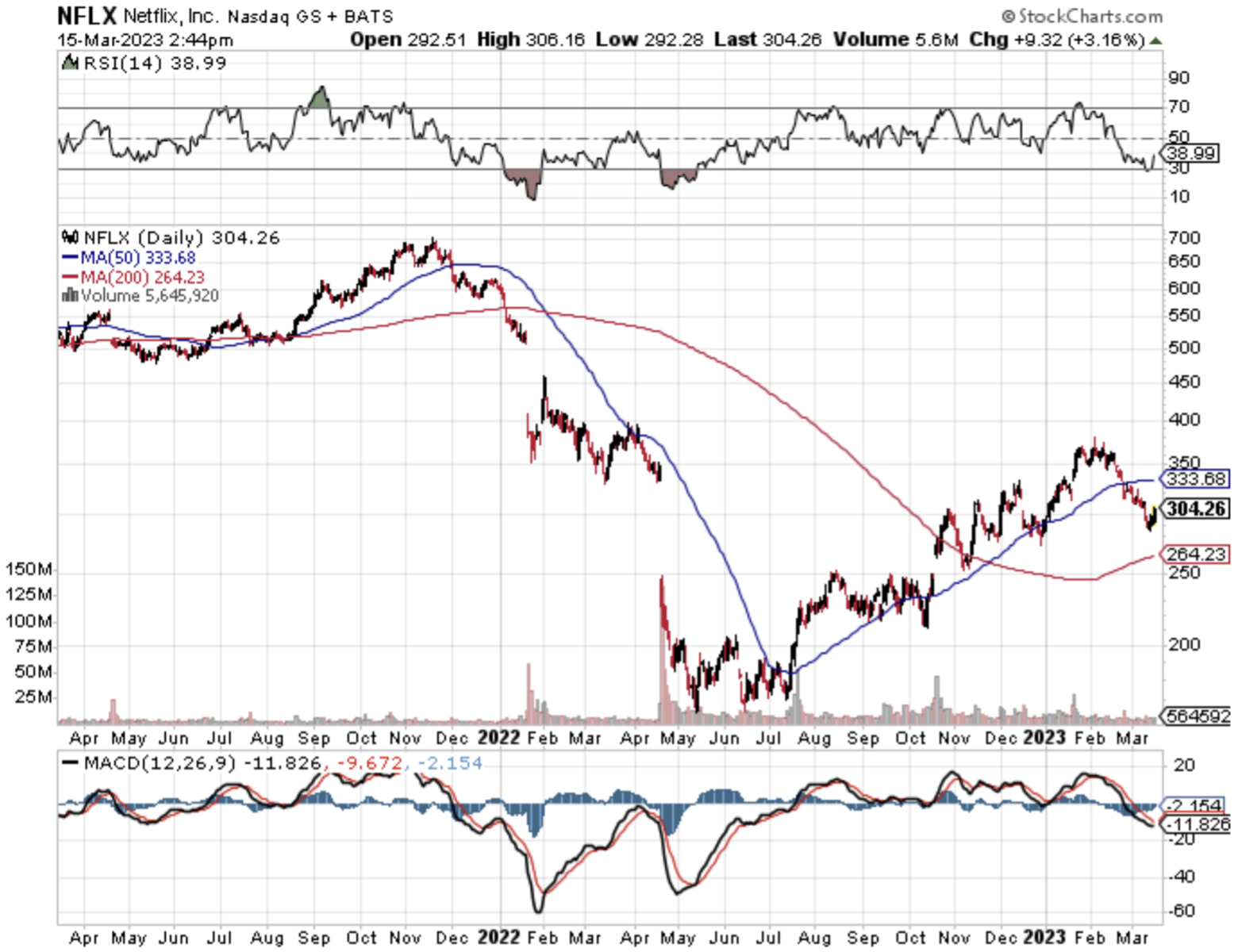

Global Market Comments
February 10, 2023
Fiat Lux
Featured Trade:
(FEBRUARY 8 BIWEEKLY STRATEGY WEBINAR Q&A),
(RCL), (TSLA), (UUP), ($VIX), (BRKB), (TLT), (TBT), (ROM), (CVNA), (SLV), (DIS)

CLICK HERE to download today's position sheet.
NOTE TO SUBSCRIBERS: There will be no strategy letter for
February 13 and 21 as I will be traveling. - JT
Below please find subscribers’ Q&A for the February 8 Mad Hedge Fund Trader Global Strategy Webinar broadcast from Silicon Valley in California.
Q: What do you make of the Chinese balloon that crossed the United States last week?
It was the most overhyped, least consequential event in recent memory, and is not a new thing. There is no chance this was an innocent scientific mission as there was no flight plan filed. What’s China’s new frontline weapon? A catapult? A bow and arrow? Are American balloon makers going to demand increased defense spending? Curiously, no mention was ever made of the three Chinese balloons that crossed the US during the previous administration when no action was taken. My guess is that a Chinese Army faction wanted to keep their defense spending rising and torpedoed any rapprochement that was in the works with the US. Another theory was that they wanted to test our response. There is nothing the balloon could have captured that the Chinese didn’t already have from their satellites or even Google Earth for free. The media coverage has been a flood of false information. If the Chinese really can predict global winds at 60,000 feet two weeks in advance, then their math is so far more advanced than our own then we might as well surrender. By the way, during WWII the Japanese sent 20,000 balloons our way in an attempt to set the Western US on fire. Only one exploded, killing a family in Oregon.
Q: I’m getting worried about my long-term LEAPS in (TLT) and (FCX) given the recent market action. Thanks in advance for your help.
A: The (TLT)'s should be OK by expiration because they hit max profit even in an unchanged bond market. But Republican radicals who want a government shutdown at any price are definitely going to rattle your cage. That’s why I currently have no short-term position in bonds and am waiting for a bigger pullback to maybe $101 before I get back in. As for Freeport McMoRan (FCX) you can take profits any time. The stock doubled after we recommended the LEAPS in October. Longer term, I think (FCX) goes to $100 because of a coming global copper shortage.
Q: Should I buy Royal Caribbean (RCL) because we’re looking at a record-breaking cruise season coming up this year?
A: The time to buy Royal Caribbean was actually last June; it was one of the first outperformers in the market, completely skipped the October meltdown, and is practically doubled off the low. So great idea, just 8 months too late. And that actually is the case with a lot of stocks now—they've had such enormous runs over a short time, that you’re taking a lot of risks to get involved here.
Q: Do you think Silicon Valley should force all workers back into the office? Wouldn't that enhance creativity?
A: It does enhance creativity but at the cost of productivity. People are much more productive when they work at home, don’t have to spend 2 hours commuting, and can build their job around their lifestyle. They work at home cheaper too. So, it’s a trade-off, do you want creativity or do you want productivity? Well, the productive people should stay at home, the creative people should go to the office—it’s a company by company, product by product decision.
Q: You say you never touch 2x and 3x ETFs?
A: The only exception to that is the ProShares UltraShort 20+ Year Treasury ETF (TBT) which we traded for 2.5 years while the bonds were making a straight line move down, or the ProShares Ultra Technology ETF (ROM) which tends to have straight up move like this year. And the only time you could do a 2x is if you think the move in the underlying is going to be so enormous it covers up all the costs of dealing in these ETFs, then it’s worth doing. 3xs I never ever touch them because those reset at the end of the day and are really designed to be intraday hedging instruments, which we’re not interested in.
Q: Are you still bearish on the US dollar (UUP)?
A: Absolutely, we’ve had almost a straight line move down ever since October, and we’re getting a temporary break on that while interest rates stay higher for longer. The next dive in interest rates, the dollar collapses once again.
Q: When you buy back into bonds, where in the curve will you be buying?
A: In bull markets, you always want to buy the longest maturity available. Back in the 1970s, I used to buy WWI infinite British Treasury bonds because they had 100-year maturities, and therefore, in any bull market, have the largest gains. In the US, the 30-year instruments are pretty illiquid, so I focus on the 10-year, which is the iShares 20 Plus Year Treasury Bond ETF (TLT).
Q: What could be the next entry point for Tesla (TSLA) LEAPS?
A: I’m afraid that we have left LEAPS land for Tesla, I mean $100, $110, $120, $130—that’s all LEAP territory. Up here? Not unless you want to do a very low return LEAP like a $150/$160. I don’t see Tesla going below $150. Too many people trying to get into the stock, and Elon Musk is a master at delivering short squeezes, which he has done a perfect job of this year.
Q: What do you think about Real Estate Investment Trusts (REITS)?
A: I love REITS. They are a falling interest rate play. Highly exposed to interest rates, highly leveraged, and you get some great performance—and we’ve already had some since October. I think the bear market in real estate ends this year and we get a new bull in housing that starts next year because we still have a chronic structural shortage of housing. We’re missing about 10 million houses that we need—in that situation, prices go up. In fact, there are still bidding wars going on in the prime residential (mostly rural) parts of the country.
Q: Wouldn’t you want to buy at-the-money calls, not spreads in a low Volatility Index ($VIX) market on a 4-6 month view, because of cheaper pricing?
A: Yes you do, but not on top of a record move to the upside. If we can get a pullback in the markets of a1 /3-1/2 of their recent moves, and the ($VIX) is still low, then that makes all the sense in the world, to buy at the money calls with ($VIX) of $17. The only problem is if we give up half the recent gains, you’re not going to have a ($VIX) at $17 anymore, it’ll be more like $27 if we get a pullback like that and options will be expensive again. It’s amazing how cheap upside exposure gets at market tops—that’s what the ($VIX) market is telling you. In other words, it’s a sucker’s bet. You can’t have your cake and eat it too.
Q: What do you think about Alphabet (GOOGL)?
A: It’s overbought like the rest of the stocks in the sector. But the charts are looking very attractive, with an upside breakout of the 200-day. Long-term, they have a killer business model, but they also have antitrust problems. Again, everything is way too overbought for me to get involved on a short-term basis.
Q: What price would you get in at for Berkshire Hathaway (BRK/B)?
A: It’s not selling off, it’s flatlining. So even a small dip like we had yesterday would be a decent place to get into. Long term we’re looking for $400/share for this by the end of this year.
Q: Will strong wage growth lead the Fed to raise interest rates higher?
A: Well they’ve already said essentially they’re going to do 2 more quarter point rises. Beyond that, the Fed itself doesn’t know. When you have interest rates at 10-20 year highs, and 3.4% unemployment. No one has ever seen that before, there is no playbook for what’s happening now—either in the economy or in the stock market. So everyone’s standing around, scratching their heads, trying to figure out what to do, and waiting for more data to come out to give direction. And I’m in the same position really.
Q: Will the US Treasury bond get down to a 2.0% yield by the end of the year?
A: I think it's a possibility but expect a lot of volatility and fears around prospects of a government shutdown this summer and a debt default. Part of the Republican party seems intent on forcing that, and that is not good for bond longs. You get through that, you could have an absolutely ballistic move up in the (TLT), to $120 or even $130.
Q: Would you consider a LEAPS on housing stocks?
A: LEAPS are things you do at multi-year market bottoms, not after 50% moves; and the housing stocks have actually been moving since June; so that was a June story. Buy low, sell high—it’s my revolutionary new concept; most people do the opposite.
Q: Should I invest in Disney (DIS) on a buy it on a Bob Iger turnaround?
A: Yes, but only on a dip; we’ve already had a massive move. If we don’t get a recession, that is fantastic for Disney’s park business.
Q: What is your target for Silver (SLV)?
A: $50/oz. We’re at $20 now. Silver is becoming the new industrial metal, far outstripping any jewelry demand that you used to have; and that’s because of EVs and solar. Who knew that we’re at 10 million homes with solar panels in California now? That is just an enormous number that’s happened mostly in the last five years.
Q: When you look at Natural Gas, would you consider LEAPS?
A: Yes, but I haven’t run the numbers yet. The price has gotten so low, down 80% in eight months that you buy it even if you hate it.
Q: Should I pay attention to demographics when I invest? What is the most important one right now?
A: Demographics are very important, because children born today become customers in 20 years, and companies will start adapting their policies for those customers now in terms of capital investments and so on. It also affects stock markets now. Also, you always want to invest in the country that had the fastest growing population, which used to be China but isn’t anymore. By the way, the reason the US economy has outperformed Europe by 1% a year in GDP growth for the last 70 years is because we allow immigrants, and they don’t. All parties used to be in favor of immigration while now only one is. Why, I don’t understand.
Q: What about a LEAP on Silver (SLV)?
A: That is a possible candidate because we have had a move, but it’s only been about 20%. It’s not like 50% or 100% like we’ve seen with Tesla (TSLA). There are a few asset classes that are still in LEAPS territory—I think Silver would be one of them, and certainly natural gas (UNG). If I were to do a LEAPS, I’d go out 2 years and do something like a $25-$27; the old high is $50. You should get about a 5x leverage on that kind of LEAPS.
Q: Would you buy LEAPS puts on Carvana (CVNA)?
A: Absolutely not. Again, another great one-year-ago idea, not a now idea. Buy Put LEAPS at extreme market tops, not now. Carvana had dropped 95% in the last year.
Q: Is seasonality an important consideration in your trading strategy?
A: Absolutely yes. If you buy stocks in November and do the sell-in-May strategy, your average annual return is something like 20% a year. If you buy stocks in May and sell them in December, the 70-year return on that is zero. I love having the tailwind of seasonality; I can’t remember seeing it when it didn’t work. It’s an important consideration, and we’re right in the middle of the “BUY” season and the market is agreeing with me.
Q: You should do a LEAPS letter.
A: I already do in fact do a LEAPS letter, and it’s called the Mad Hedge Concierge Service where we have a whole website dedicated to just LEAPS. Some ten out of 12 made money last year, and some went up 10X. Contact customer support at support@madhedgefundtrader.com if you’re interested. Concierge members are very happy with their LEAPS coverage.
To watch a replay of this webinar with all the charts, bells, whistles, and classic rock music, just log in to www.madhedgefundtrader.com , go to MY ACCOUNT, click on GLOBAL TRADING DISPATCH or TECHNOLOGY LETTER, then WEBINARS, and all the webinars from the last 12 years are there in all their glory.
Good Luck and Stay Healthy,
John Thomas
CEO & Publisher
The Diary of a Mad Hedge Fund Trader


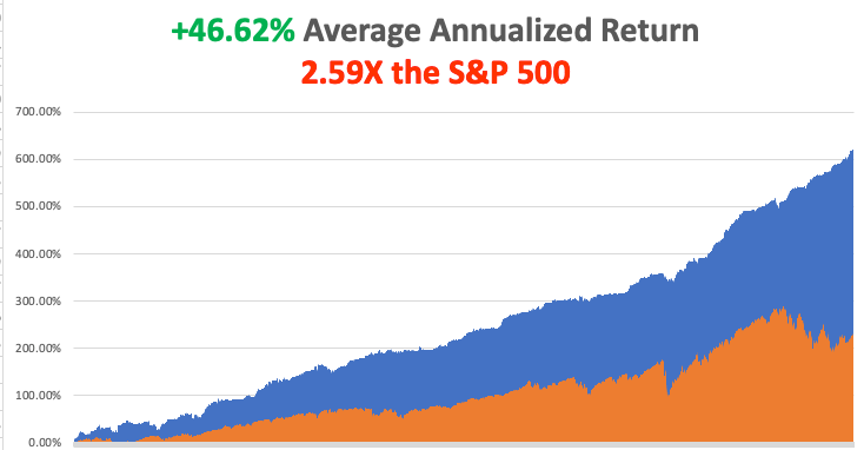
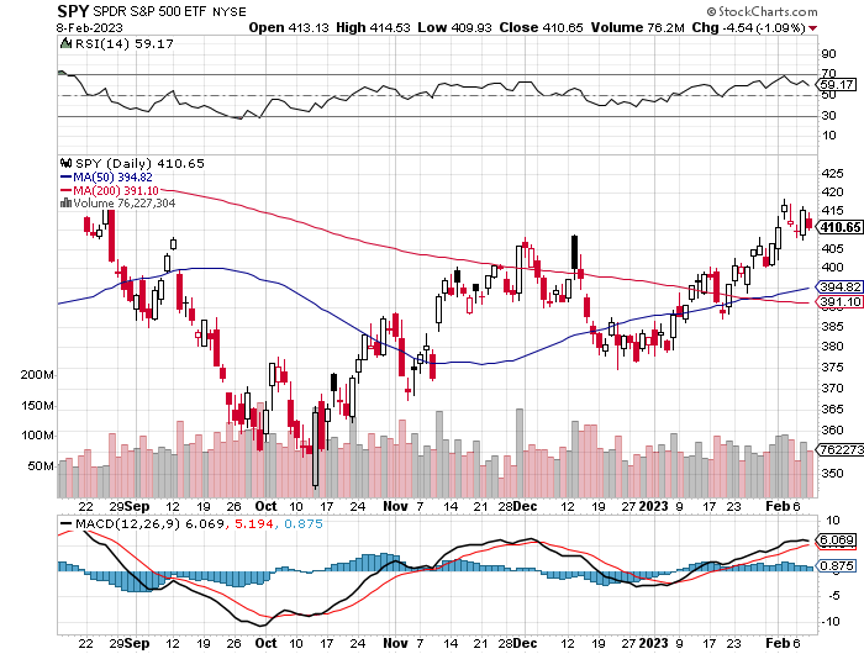
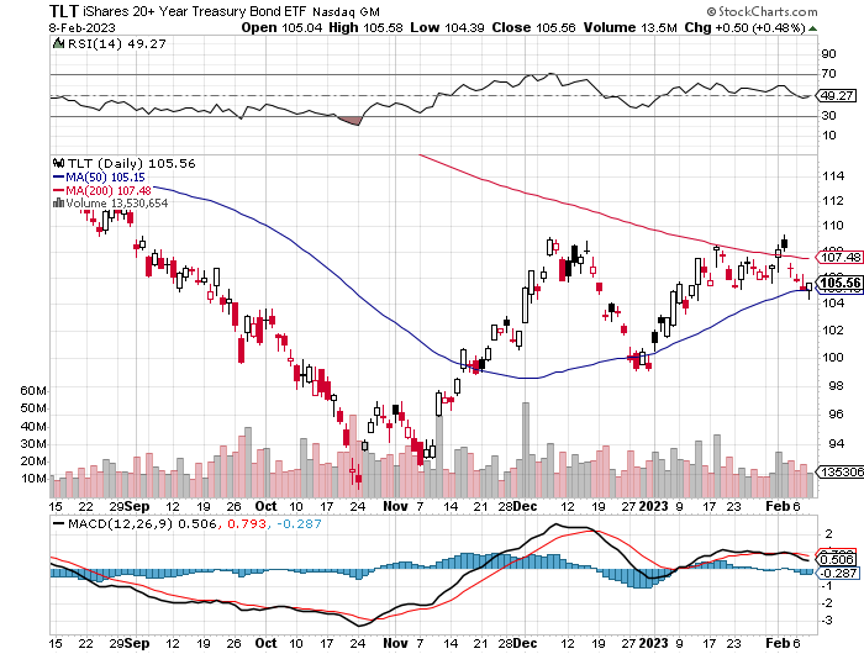
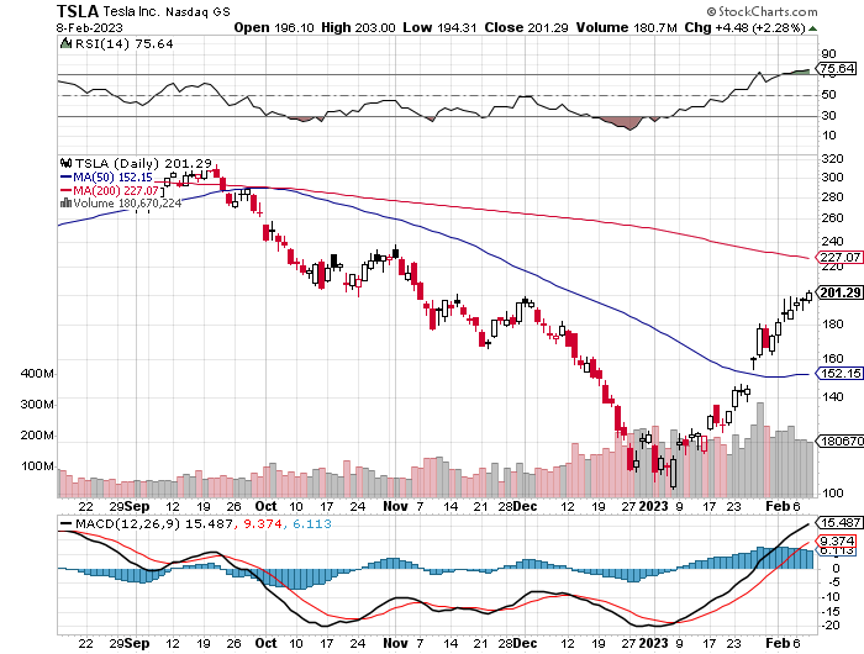
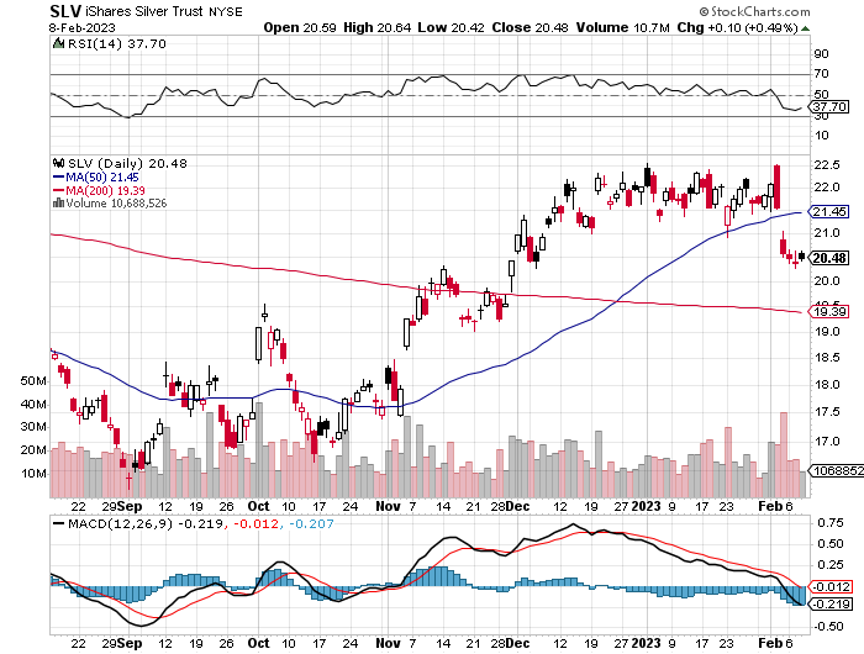
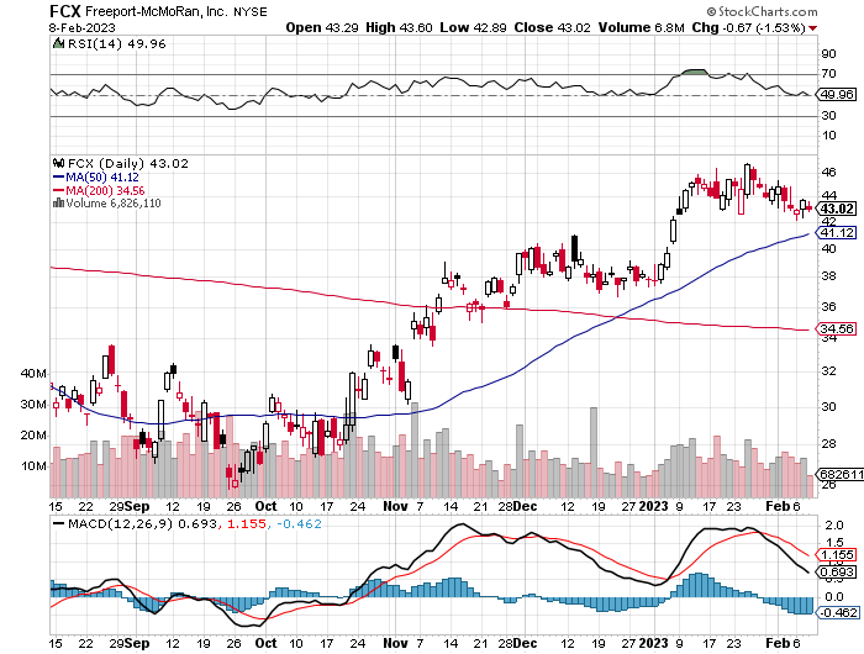

At 29 Palms in my M1 Abrams Tank in 2000
Global Market Comments
September 6, 2022
Fiat Lux
Featured Trade:
(MARKET OUTLOOK FOR THE WEEK AHEAD, or WELCOME TO THE ROLLING RECESSION),
(AAPL), (NVDA), (TSLA), (USO), (BTC), (MSFT), (CRM), (V), (BA), (MSFT), (CRM), (DIS)

The airline business is booming but homebuilders are in utter despair. Hotel rooms are seeing extortionate 56% YOY price increases, while residential real estate brokers are falling flat on their faces.
It’s a recession that’s here, there, and nowhere.
Welcome to the rolling recession.
If you are lucky enough to work in a handful of in-demand industries, times have never been better. If you aren’t, then it’s Armageddon.
Look at single industries one at a time, as the media tends to do, business conditions are the worst since the Great Depression and pessimism is rampant. Look at Tesla, where there is a one-year wait to get a Model X, and there is either a modest recession on the menu, or simply slowing growth at worst.
Notice that a lot of commentators are using the word “normally”. News Flash: nothing has been normal with this economy for three years.
Which leaves us with dueling yearend forecasts for the S&P 500. It will either be at 3,900, where it is now, or 4,800. A market that is unchanged, worst case, and up 20% best case sounds like a pretty good bet to me. The prospects for individual stocks, like Tesla (TSLA), Microsoft (MSFT), or NVIDIA (NVDA) are even better, with a chance of 20% of downside or 200% of upside.
I’ll sit back and wait for the market to tell me what to do. In the meantime, I am very happy to be up 60% on the year and 90% in cash.
An interesting thing is happening to big-cap tech stocks these days. They are starting to command bigger premiums both in the main market and in other technology stocks as well.
That is because investors are willing to pay up for the “safest” stocks. In effect, they have become the new investment insurance policy. Look no further than Apple (AAPL) which, after a modest 14% decline earlier this year, managed a heroic 30% gain. Steve Jobs’ creation now boasts a hefty 28X earnings multiple. Remember when it was only 9X?
Remember, the stock sells off on major iPhone general launches like we are getting this week, so I’d be careful that my “insurance policy” doesn’t come back and bite me in the ass.
Nonfarm Payroll Report Drops to 315,000 in August, a big decline, and the Headline Unemployment Rate jumps to 3.7%. The Labor Force Participation Rate increased to 62.4%. The “discouraged worker” U-6 unemployment rate jumped to 7.0%. Manufacturing gained 22,000. Stocks loved it, but it makes a 75-basis point in September a sure thing.
Jeremy Grantham Says the Stock Super Bubble Has Yet to Burst, for the seventh consecutive year. If I listened to him, I’d be driving an Uber cab by now, commuting between side jobs at Mcdonald's and Taco Bell. Grantham sees stocks, bonds, commodities, real estate, precious metals, crypto, and collectible Beanie Babies as all overvalued. Even a broken clock is right twice a day unless you’re in the Marine Corps, which uses 24-hour clocks.
Where are the Biggest Buyers on the Dip? Microsoft (MSFT), Salesforce (CRM), and Disney (DIS), followed by Visa (V), and Boeing (BA). Analysts see 20% of upside for (MSFT), 32% for (CRM), and 21% for (DIS). Sure, some of these have already seen big moves. But the smart money is buying Cadillacs at Volkswagen prices, which I have been advocating all year. Take the Powell-induced meltdown as a gift.
The Money Supply is Collapsing, down for four consecutive months. M2 is now only up less than 1% YOY. This usually presages a sharp decline in the inflation rate. With a doubling up of Quantitative Tightening this month, we could get a real shocker of a falling inflation rate on September 13. Online job offers are fading fast and used cars have suddenly become available. This could put in this year’s final bottom for stocks.
California Heads for a Heat Emergency This Weekend, with temperatures of 115 expected. Owners are urged to fully charge their electric cars in advance and thermostats have been moved up to 78 as the electric power grid faces an onslaught of air conditioning demand. The Golden State’s sole remaining Diablo Canyon nuclear power plant has seen its life extended five years to 2030. This time, the state has a new million more storage batteries to help.
Oil (USO) Dives to New 2022 Low on spreading China lockdowns. Take the world’s largest consumer offline and it has a big impact. More lows to come.
NVIDIA (NVDA) Guides Down in the face of new US export restrictions to China. The move will cost them $400 million in revenue. These are on the company’s highest-end A100 and H100 chips which China can’t copy. (AMD) received a similar ban. It seems that China was using them for military AI purposes. The shares took a 9% dive on the news. Cathie Wood’s Ark (ARKK) Funds dove in and bought the lows.
Weekly Jobless Claims Plunge to 232,000, down from 250,000 the previous week for the third consecutive week. No recession in these numbers.
First Solar (FSLR) Increases Output by 70%, thanks to a major tax subsidy push from the Biden Climate Bill. The stock is now up 116% in six weeks. We have been following this company for a decade and regularly fly over its gigantic Nevada solar array. Buy (FSLR) on dips.
Home Prices Retreat in June to an 18% YOY gain, according to the Case Shiller National Home Price Index. That’s down from a 19.9% rate in May. Tampa (35%), Miami (33%), and Dallas (28.2%) showed the biggest gains. Blame the usual suspects.
Tesla (TSLA) Needs $400 Billion to expand its vehicle output to Musk’s 20 million units a year target. One problem: there is currently not enough commodity production in the world to do this. That sets up a bright future for every commodity play out there, except oil.
Bitcoin (BTC) is Headed Back to Cost, after breaking $20,000 on Friday. With the higher cost of electricity and mining bans, spreading the cost of making a new Bitcoin is now above $17,000. It doesn’t help that much of the new crypto infrastructure is falling to pieces.
My Ten-Year View
When we come out the other side of pandemic and the recession, we will be perfectly poised to launch into my new American Golden Age, or the next Roaring Twenties. With oil prices and inflation now rapidly declining, and technology hyper-accelerating, there will be no reason not to. The Dow Average will rise by 800% to 240,000 or more in the coming decade. The America coming out the other side will be far more efficient and profitable than the old. Dow 240,000 here we come!
With a very troublesome flip-flopping market, my August performance still posted a decent +5.13%.
My 2022 year-to-date performance ballooned to +59.96%, a new high. The Dow Average is down -13.20% so far in 2022. It is the greatest outperformance on an index since Mad Hedge Fund Trader started 14 years ago. My trailing one-year return maintains a sky-high +71.90%.
That brings my 14-year total return to +572.52%, some 2.60 times the S&P 500 (SPX) over the same period and a new all-time high. My average annualized return has ratcheted up to +44.90%, easily the highest in the industry.
We need to keep an eye on the number of US Coronavirus cases at 94.7 million, up 300,000 in a week and deaths topping 1,047,000 and have only increased by 2,000 in the past week. You can find the data here.
On Monday, September 5 markets are closed for Labor Day.
On Tuesday, September 6 at 7:00 AM, the ISM Non-Manufacturing PMI for August is out.
On Wednesday, September 7 at 11:00 AM, the Fed Beige Book for July is published.
On Thursday, September 8 at 8:30 AM, Weekly Jobless Claims are announced.
On Friday, September 9 at 2:00 the Baker Hughes Oil Rig Count is out.
As for me, the first thing I did when I received a big performance bonus from Morgan Stanley in London in 1988 was to run out and buy my own airplane.
By the early 1980s, I’d been flying for over a decade. But it was always in someone else’s plane: a friend’s, the government’s, a rental. And heaven help you if you broke it!
I researched the market endlessly, as I do with everything, and concluded that what I really needed was a six-passenger Cessna 340 pressurized twin turbo parked in Santa Barbara, CA. After all, the British pound had just enjoyed a surge again the US dollar so American planes were a bargain. It had a range of 1,448 miles and therefore was perfect for flying around Europe.
The sensible thing to do would have been to hire a professional ferry company to fly it across the pond. But what’s the fun in that? So, I decided to do it myself with a copilot I knew to keep me company. Even more challenging was that I only had three days to make the trip, as I had to be at my trading desk at Morgan Stanley on Monday morning.
The trip proved eventful from the first night. I was asleep in the back seat over Grand Junction, CO when I was suddenly awoken by the plane veering sharply left. My co-pilot had fallen asleep, running the port wing tanks dry and shutting down the engine. He used the emergency boost pump to get it restarted. I spent the rest of the night in the co-pilot’s seat trading airplane stories.
The stops at Kansas City, MO, Koshokton, OH, Bangor, ME proved uneventful. Then we refueled at Goose Bay, Labrador in Canada, held our breath and took off for our first Atlantic leg.
Flying the Atlantic in 1988 is not the same as it is today. There were no navigational aids and GPS was still top secret. There were only a handful of landing strips left over from the WWII summer ferry route, and Greenland was still littered with Mustang’s, B-17’s, B24’s, and DC-3’s. Many of these planes were later salvaged when they became immensely valuable. The weather was notorious. And a compass was useless, as we flew so close to the magnetic North Pole the needle would spin in circles.
But we did have NORAD, or America’s early warning system against a Russian missile attack.
The practice back then was to call a secret base somewhere in Northern Greenland called “Sob Story.” Why it was called that I can only guess, but I think it has something to do with a shortage of women. An Air Force technician would mark your position on the radar. Then you called him again two hours later and he gave you the heading you needed to get to Iceland. At no time did he tell you where HE was.
It was a pretty sketchy system, but it usually worked.
To keep from falling asleep, the solo pilots ferrying aircraft all chatted on frequency 123.45 MHz. Suddenly, we heard a mayday call. A female pilot had taken the backseat out of a Cessna 152 and put in a fuel bladder to make the transatlantic range. The problem was that the pump from the bladder to the main fuel tank didn’t work. With eight pilots chipping in ideas, she finally fixed it. But it was a hair-raising hour. There is no air-sea rescue in the Arctic Ocean.
I decided to play it safe and pick up extra fuel in Godthab, Greenland. Godthab has your worst nightmare of an approach, called a DME Arc. You fly a specific radial from the landing strip, keeping your distance constant. Then at an exact angle you turn sharply right and begin a descent. If you go one degree further, you crash into a 5,000-foot cliff. Needless to say, this place is fogged 365 days a year.
I executed the arc perfectly, keeping a threatening mountain on my left while landing. The clouds mercifully parted at 1,000 feet and I landed. When I climbed out of the plane to clear Danish customs (yes, it’s theirs), I noticed a metallic scraping sound. The runway was covered with aircraft parts. I looked around and there were at least a dozen crashed airplanes along the runway. I realized then that the weather here was so dire that pilots would rather crash their planes than attempt a second go.
When I took off from Godthab, I was low enough to see the many things that Greenland is famous for polar bears, walruses, and natives paddling in deerskin kayaks. It was all fascinating.
I called into Sob Story a second time for my heading, did some rapid calculations, and thought “damn”. We didn’t have enough fuel to make it to Iceland. The wind had shifted from a 70 MPH tailwind to a 70 MPH headwind, not unusual in Greenland. I slowed down the plane and configured it for maximum range.
I put out my own mayday call saying we might have to ditch, and Reykjavik Control said they would send out an orange bedecked Westland Super Lynch rescue helicopter to follow me in. I spotted it 50 miles out. I completed a five-hour flight and had 15 minutes of fuel left, kissing the ground after landing.
I went over to Air Sea rescue to thank them for a job well done and asked them what the survival rate for ditching in the North Atlantic was. They replied that even with a bright orange survival suit on, which I had, it was only about half.
Prestwick, Scotland was uneventful, just rain as usual. The hilarious thing about flying the full length of England was that when I reported my position in, the accents changed every 20 miles. I put the plane down at my home base of Leavesden and parked the Cessna next to a Mustang owned by a rock star.
I asked my pilot if ferrying planes across the Atlantic was also so exciting. He dryly answered “Yes.” He told me that in a normal year, about 10% of the planes go missing.
I raced home, changed clothes, and strode into Morgan Stanley’s office in my pin-stripped suit right on time. I didn’t say a word about what I just accomplished.
The word slowly leaked out and at lunch, the team gathered around to congratulate me and listen to some war stories.
Stay healthy,
John Thomas
CEO & Publisher
The Diary of a Mad Hedge Fund Trader
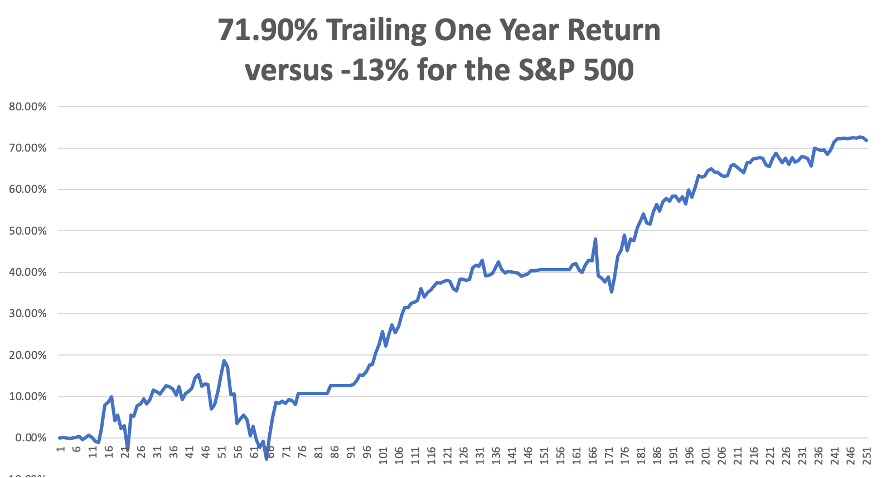
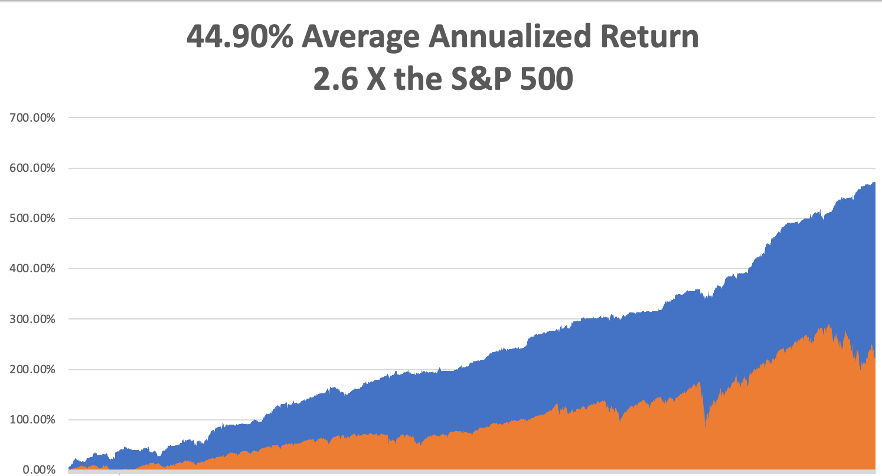

Flying the Atlantic in 1988

Looking for a Place to Land in Greenland

Landing on a Postage Stamp in Godthab, Greenland

No Such a Great Landing
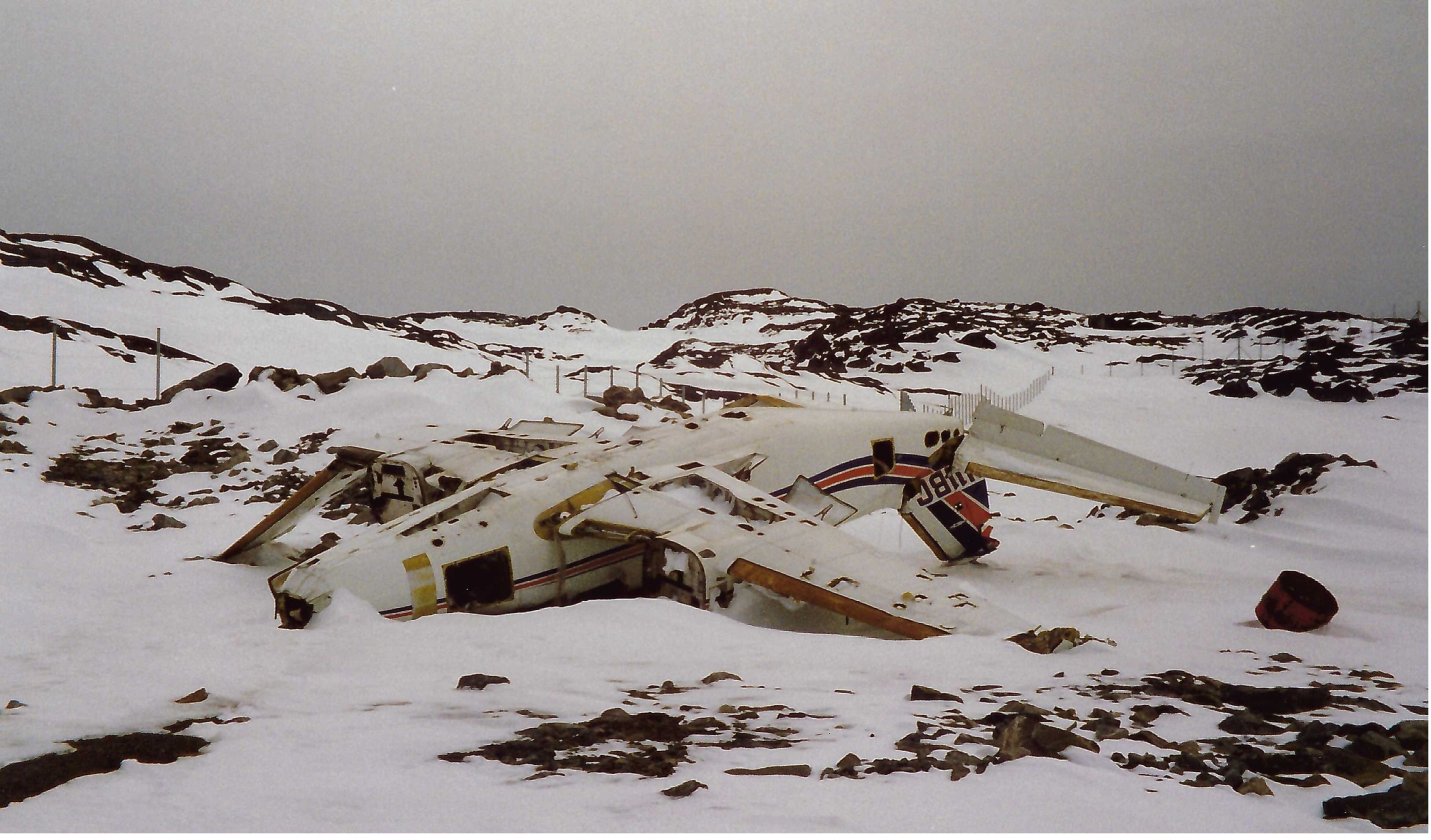
No Such a Great Landing

Flying Low Across Greenland

Gassing Up in Iceland

Almost Home at Prestwick

Back to London in 1988
Mad Hedge Technology Letter
April 20, 2022
Fiat Lux
Featured Trade:
(PEAK EYEBALLS)
(DIS), (CURI), (ROKU), (PTON), (ZM), (WBD), (FUBO), (NFLX)

Online streamers now have no pricing power.
Remove jacking up prices from the equation and streamers like Netflix (NFLX) and Disney (DIS) look quite mediocre and that’s what the 35% drop in NFLX shares are telling us.
NFLX Ahh factor has vanished.
It used to be that they knew they could raise prices whenever they wanted and that tool in their kit kept investors on board.
CNN+’s dismal foray into pay tv was another red flag when owner Warner Bros. Discovery (WBD) decided to pull all marketing spend because of the paltry viewing results.
There’s just too much competition out there and instead of creating more leeway, growth was pulled forward the past 2 years, and now the chickens are coming home to roost.
Shelter-at-home stocks like Peloton (PTON) and Zoom (ZM) are now surplus to requirements.
It was just not that long ago, that fresh streaming TV options launched at a frenzied pace.
With many subscription services available, streaming entertainment became ubiquitous in U.S. homes as consumers spent large quantities of time and money on streaming media.
As economies reopen following the end of the health situation, and consumers spend more time outside of their homes, there still are just other things to do like going outside.
The idea that there are still many years of streaming growth lie ahead for the streaming industry has turned out to be an utter fallacy.
These are some tech companies impacted.
The much-anticipated Disney+ streaming service was launched in late 2019, just in time for the health situation.
It added tens of millions of subscribers worldwide in its first year and quickly became the second-largest subscription streaming service after Netflix. Disney also owns the streaming services Hulu and ESPN+ in the U.S. but they still don’t turn a profit on many of these streaming assets yet.
It is unlikely that new content will reverse generating excessive losses.
Better Disney stick to the amusement parks.
Streaming TV has been a boon for the smart TV and streaming device maker.
Roku has become the largest TV platform in the U.S., distributing content via The Roku Channel and acting as a hub for households to manage all of their streaming subscriptions.
Roku distributes its smart TV software and streaming devices at minimal cost, making money instead on advertising and by managing subscriptions.
With peak eyeballs on streaming, don’t expect any explosive growth from Roku, in fact, they could go with a whimper and wait for a buyout.
This is a warning sign for any tech company that chooses to not produce their own in-house content and relying on others to draft the narrative of future health is awfully dangerous in a zero sum game.
Streaming service fuboTV, a relative newcomer to the streaming media industry, went public in 2020.
This small service has gained popularity as a live TV platform, and it’s a top option for those who want to watch live sporting events.
The smaller they come, the harder they fall.
Smaller streaming companies have little recourse when multiple exogenous forces impact the company.
fuboTV is nowhere near profitability and has lost close to half a billion dollars in each of the past 2 years.
Public companies are often harangued for going ex-growth the second they are tradable in New York, and this is the epitome of what I am talking about.
The stock has gone from $35 to $5 today in the past 5 months.
Don’t catch a falling knife here.
CURI is another newbie to the dying streaming industry.
This streaming media company focuses on documentaries and science content and was founded by Discovery’s
CURI is competing against some well-entrenched rivals in the non-fiction TV space, including Discovery and Disney’s National Geographic (available on Disney+).
The young company keeps its content creation costs relatively low since it focuses on educational material and partners with universities, but who really wants to see this type of content anyway.
This company sounds boring and naïve.
CURI’s stock price has gone from $17 to $2 in the past 5 months.
Avoid like the plague!
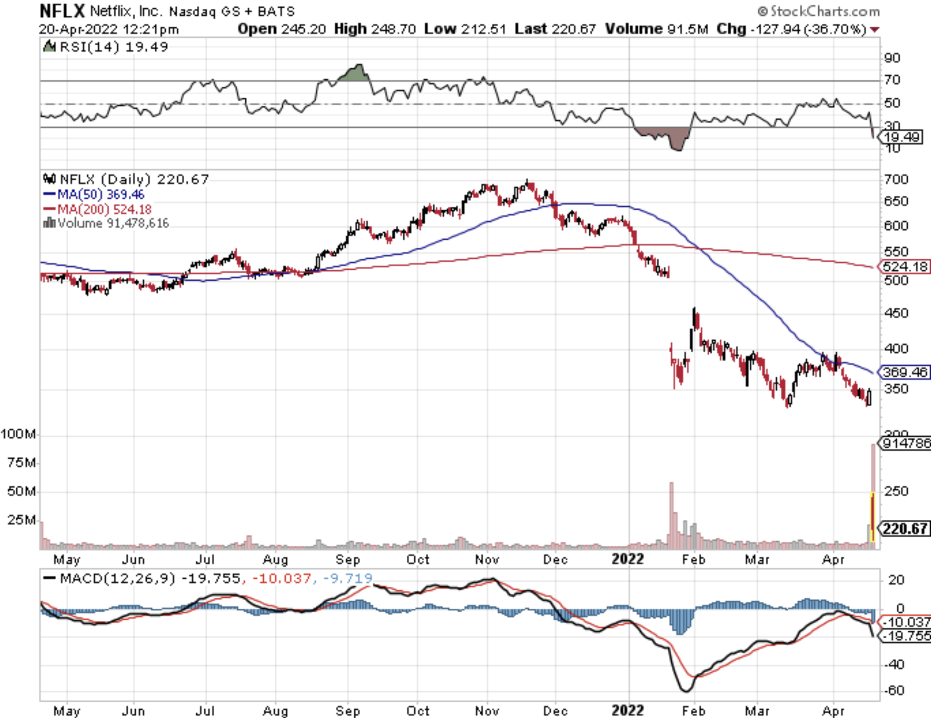
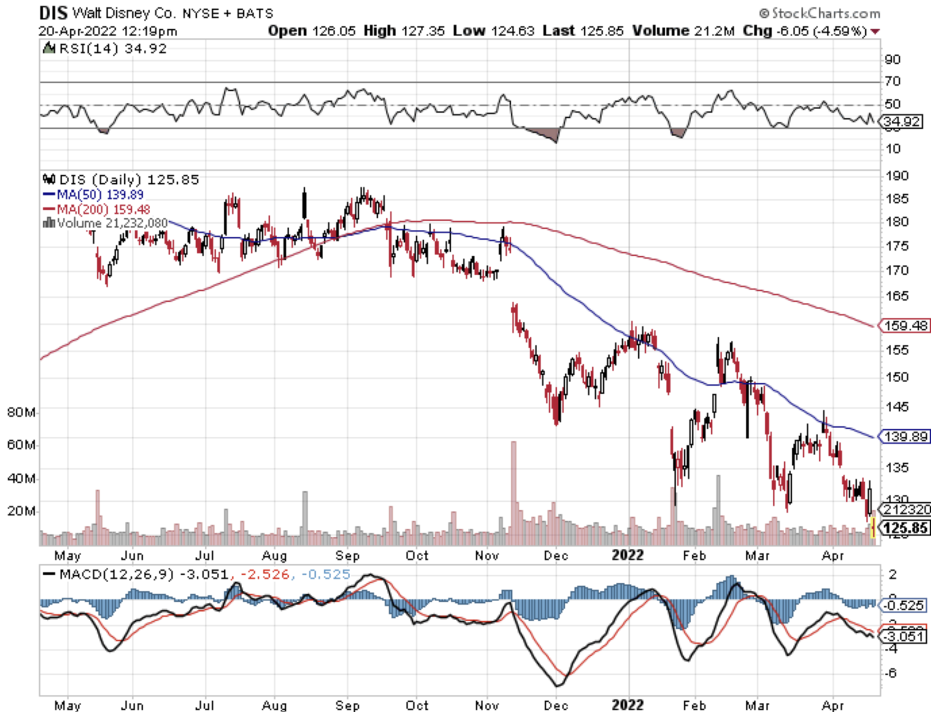
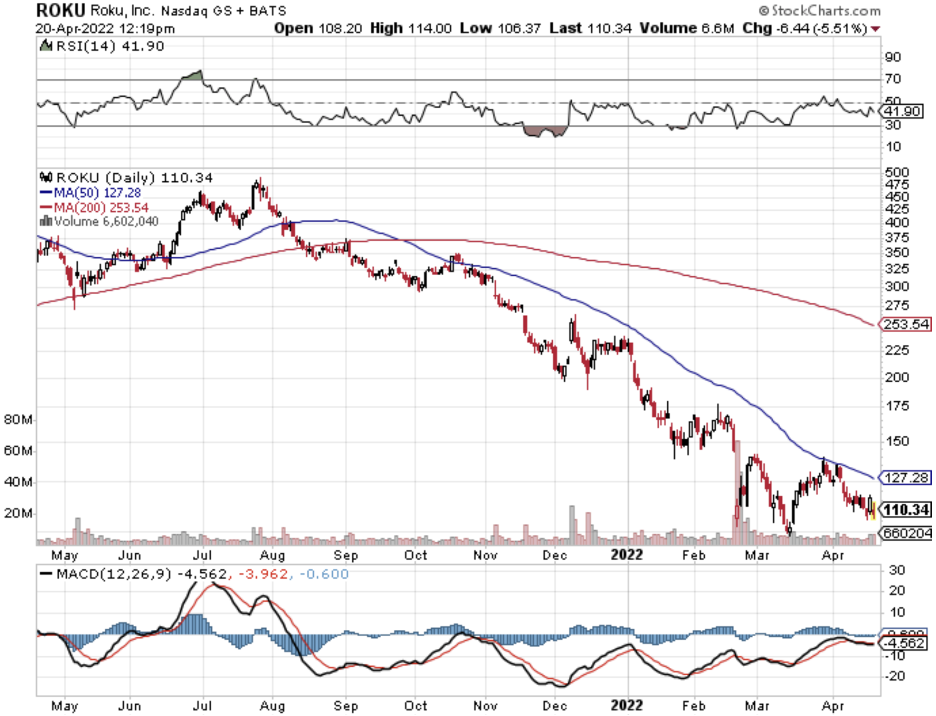
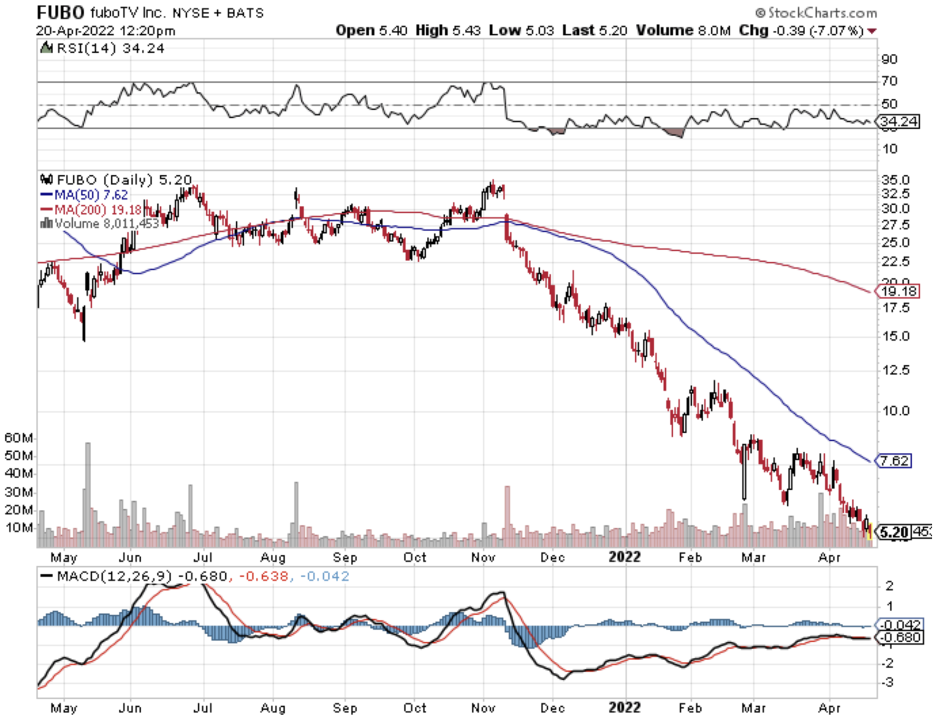
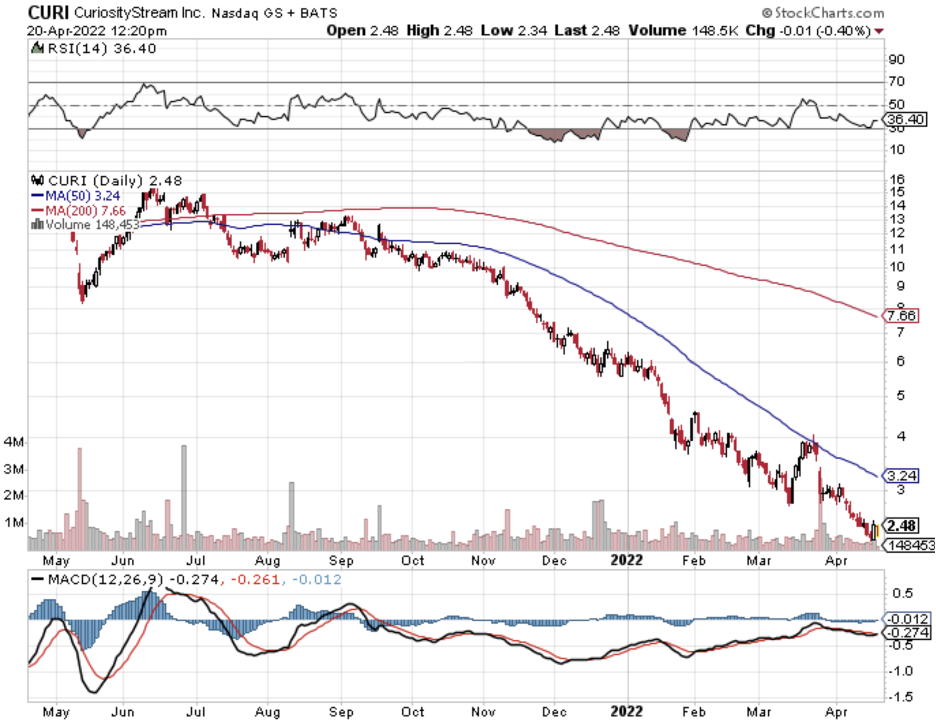
Global Market Comments
March 4, 2022
Fiat Lux
Featured Trade:
(MARCH 2 BIWEEKLY STRATEGY WEBINAR Q&A),
(QQQ), (TSLA), (FCX), (JPM), (BAC), (MS), (TLT),
(TBT),(BA), UPS (UPS), (CAT), (DIS), (DAL),
(GOLD), (VIX), (VXX), (CAT), (BA)

Below please find subscribers’ Q&A for the March 2 Mad Hedge Fund Trader Global Strategy Webinar broadcast from Incline Village, Nevada.
Q: Do you think Vladimir Putin will give up?
A: He will either be forced to give up, run out of resources/money, or he will suddenly have an accident. When the people see their standard of living go from a per capita income of $10,000/year today to $1,000—back to where it was during the old Soviet Union—his lifespan will suddenly become very limited.
Q: Would you be buying Invesco Trusts (QQQs) on dips?
A: I think we have a few more horrible days—sudden $500- or $1,000-point declines—but we’re putting in a bottom of sorts here. It may take a month or two to finalize, but the second buying opportunity of the decade is setting up; of course, the other one was two years ago at the pandemic low. So, do your research, make your stock picks now, and once we get another absolute blow-up to the downside, that is your time to go in.
Q: Materials have gone up astronomically, are they still a buy?
A: Yes, on dips. I wouldn't chase 10% or 20% one-week moves up here—there are too many other better trades to do.
Q: Is it time to go long aggressively in Europe?
A: No, because Europe is going to experience a far greater impact economically than the US, which will have virtually none. In fact, all the impacts on the US are positive except for higher energy prices. So, I think Europe will have a much longer recovery in the stock market than the US.
Q: Would you take a flier on a Russian ETF (RSX)?
A: No, most, if not all, of them are about to be delisted because they have been banned or the liquidity has completely disappeared. The (RSX) has just collapsed 85%, from $26 to $4. Virtually all of Russia is for sale, not only stocks, bonds, junk bonds, ETFs, but also joint ventures. ExxonMobil, Shell and BP are all dumping their ownership of Russian subsidiaries as we speak.
Q: Time for a Freeport-McMoRan (FCX) LEAP?
A: No, November was the time for an (FCX) LEAP—we’ve already had a massive run now, up 66% in five months, so wait for the next dip. The next LEAPS are probably going to be in technology stocks in a few months.
Q: My iShares 20 Plus Year Treasury Bond ETF (TLT) call $130 was assigned, What should I do?
A: Call your broker immediately and tell them to exercise your 127 to cover your short in the 130. They usually charge a few extra fees on that because they can get away with it, but you’ve just made the maximum profit on the position. If you haven’t been exercised yet, that 127/130 call spread will expire at max profit in 10 days.
Q: What if I get my short side called away on a position?
A: Use your long side calls to execute immediately to cover your short side. These call spreads are perfectly hedged positions, same name, same maturity, same size, just different strike prices. If your broker doesn’t hear from you at all, they will just exercise the short call and leave you long the long call, and that can lead to a margin call. So the second you get one of these calls, contact your broker immediately and get out of the position.
Q: Is it safe to put 100% of your money in Tesla (TSLA) for the long term?
A: Only if you can handle a 50% loss of your money at any time. Most people can't. It’s better to wait for Tesla to drop 50%, which it has almost done (it’s gotten down to $700), and then put in a large position. But you never bet all your money on one position under any circumstances. For example, what if Elon Musk died? What would Tesla’s stock do then? It would easily drop by half. So, I’ll leave the “bet the ranch trades” for the younger crowd, because they’re young enough to lose all their money, start all over again, and still earn enough for retirement. As for me, that is not the case, so I will pass on that trade. You should pas too.
Q: Do you foresee NASDAQ (QQQ) being up 5-10% or 10-20% by year-end?
A: I do actually, because business is booming across tech land, and the money-making stocks are hardly going down and will just rocket once the rotation goes back into that sector.
Q: We could see an awful earnings sequence in April, which could put in the final bottom on this whole move.
A: That is right. We need one more good capitulation to get a final bottom in, and then we’re in LEAP territory on probably much of the market. We know we’re having a weak quarter from all the anecdotal data; those companies will produce weak earnings and the year-on-year comparisons are going to be terrible. A lot of companies will probably show down turns in earnings or losses for the quarter, that's all the stuff good bottoms are made out of.
Q: What should we make of the Russian threats of WWIII going Nuclear?
A: I think if Putin gave the order, the generals would ignore it and refuse to fire, because they know it would mean suicide for the entire country. Mutual Assured Destruction (MAD) is still in place, and it still works. And by the way, it hasn’t been in the media, but I happen to know that American nuclear submarines with their massive salvos of MIRVed missiles, have moved much closer to Russian waters. So, you're looking at a war that would be over in 15 minutes. I think that would also be another scenario in which they replace Putin: if he gives such an order. This has actually happened in the past; people without top secret clearance don’t know this but Boris Yeltsen actually gave an order to launch nuclear missiles in the early 90s when he got mad at the US about something. The generals ignored it, because he was drunk. And something else you may not know is that 95% of the Russian nuclear missiles don’t work—they don’t have the GDP to maintain 7,000 nuclear weapons at full readiness. Plutonium is one of the world’s most corrosive substances and very expensive to maintain. Only a wealthy country like the US could maintain that many weapons because it’s so expensive. So no, you don’t need to dig bomb shelters yet, I think this stays conventional.
Q: Banks like (JPM), (BAC), AND (MS) are at a low—are they a buy?
A: Yes, but not yet; wait for more shocks to the system, more panic selling, and then the banks are absolutely going to be a screaming buy because they are on a long-term trend on interest rates, strong economy, lowering defaults—all the reasons we’ve been buying them for the last year.
Q: Should I short bonds or should I buy Freeport up 60%?
A: Short bonds. Next.
Q: Should I buy Europe or should I short bonds?
A: Short bonds. That should be your benchmark for any trade you’re considering right now.
Q: How much and how quickly will we see a collapse in defense stocks?
A: Well, you may not see a collapse in defense stocks, because even if Russia withdraws from Ukraine, they still are a newly heightened threat to the West, and these increases in defense spending are permanent. That’s why the stocks have gone absolutely ballistic. Yeah sure, you may give up some of these monster gains we’ve had in the last week, but this is a dip-buying sector now after being ignored for a long time. So yes, even if Russia gives up, the world is going to be spending a lot more on defense, probably for the rest of our lives.
Q: Just to confirm, LEAP candidates are Boeing (BA), UPS (UPS), Caterpillar (CAT), Disney (DIS), Delta Airlines (DAL)?
A: I would say yes. You may want to hold off, see if there’s one more meltdown to go; or you can buy half now and half on either the next meltdown or the melt-up and get yourself a good average position. And when I say LEAPS, I mean going out at least a year on a call spread in options on all of these things.
Q: Is $143 short safe on the (TLT)?
A: Definitely, probably. In these conditions, you have to allow for one day, out of the blue, supers pikes of $3 like we got last week, or $5 trins week, only to be reversed the next day. The trouble is even if it reverses the next day, you’re still stopped out of your position. So again, the message is, don’t be greedy, don’t over-leverage, don’t go too close to the money. There’s a lot of money to be made here, but not if you blow all your profits on one super aggressive trade. And take it from someone who’s learned the hard way; you want to be semi-conservative in these wild trading conditions. If you do that, you will make some really good money when everyone else is getting their head handed to them.
Q: Would you go in the money or out of the money for Boeing (BA) and Caterpillar (CAT)?
A: It just depends on your risk tolerance. The best thing here is to do several options combinations and then figure out what the worst-case scenario is. If you can handle that worst-case scenario without stopping out, do those strikes. These LEAPS are great, unless you have to stop out, and then they will absolutely kill you. And usually, you only do these with sustained uptrends in place; we don’t have that yet which is why I’m saying, watch these LEAPS. Don’t necessarily execute now, or if you do, just do it in small pieces and leg in. That is the smart answer to that.
Q: What’s the probability that the CBOE Volatility Index (VIX) makes a new high in the next 2 weeks?
A: I give it 50/50.
Q: Call options on the VIX?
A: No, that’s one of the super high-risk trades I have to pass on.
Q: How low can the VIX go down this month?
A: High ten’s is probably a worst-case scenario.
Q: LEAPS on Barrick Gold Corporation (GOLD)?
A: No, that was a 3-month-ago trade. Now it’s too late, never consider a LEAP at an all-time high or close to it.
Q: Time to short oil?
A: Not yet. We have some spike top going on in oil. It’s impossible to find the top on this because, while bottoms are always measurable with PE multiples and such, tops are impossible to measure because then you’re trying to quantify human greed, which can’t be done. So yeah, I would stand by; it’s something you want to sell on the way down. This is the inverse of catching a falling knife.
To watch a replay of this webinar with all the charts, bells, whistles, and classic rock music, just log in to www.madhedgefundtrader.com , go to MY ACCOUNT, click on GLOBAL TRADING DISPATCH, then WEBINARS, and all the webinars from the last ten years are there in all their glory.
Good Luck and Stay Healthy.
John Thomas
CEO & Publisher
The Diary of a Mad Hedge Fund Trader
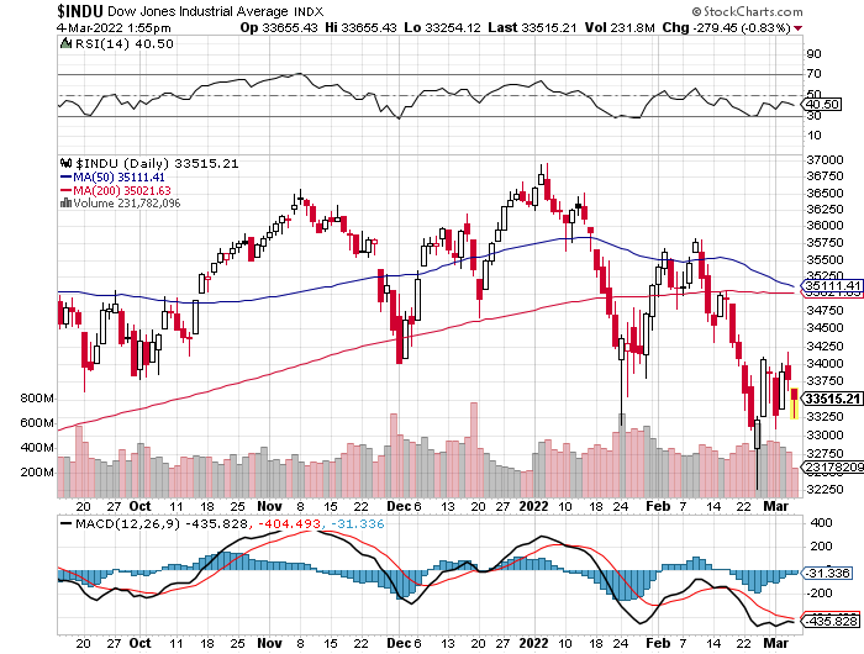
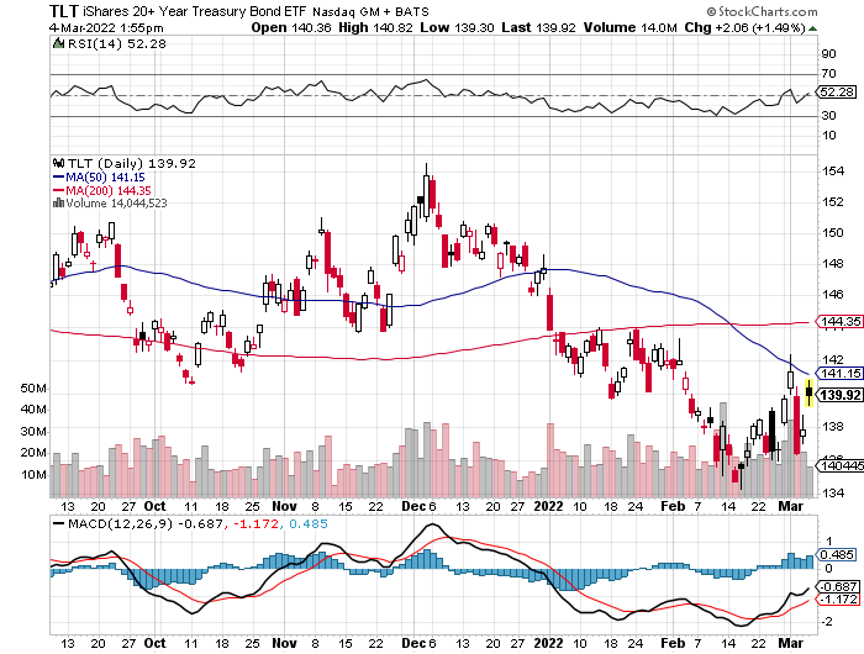
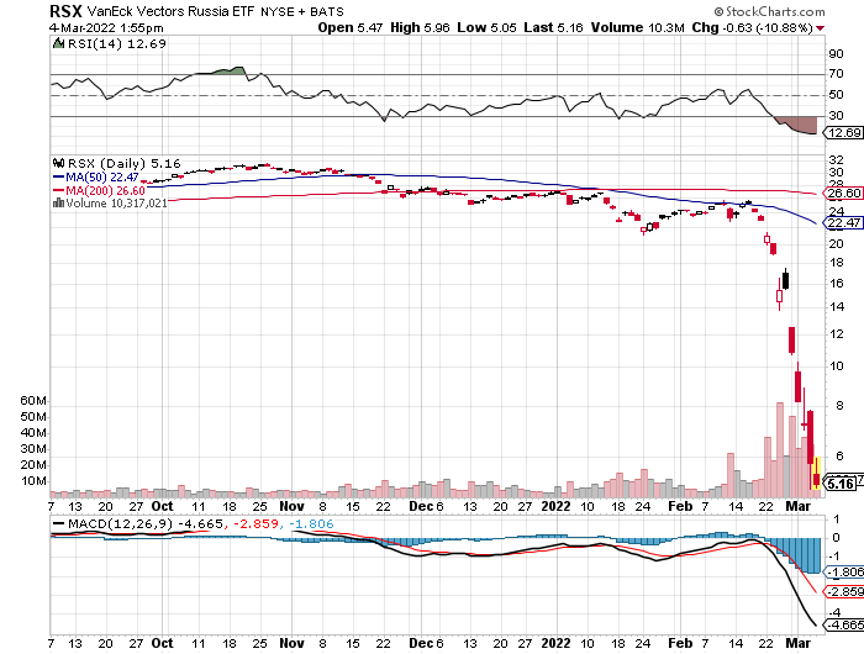
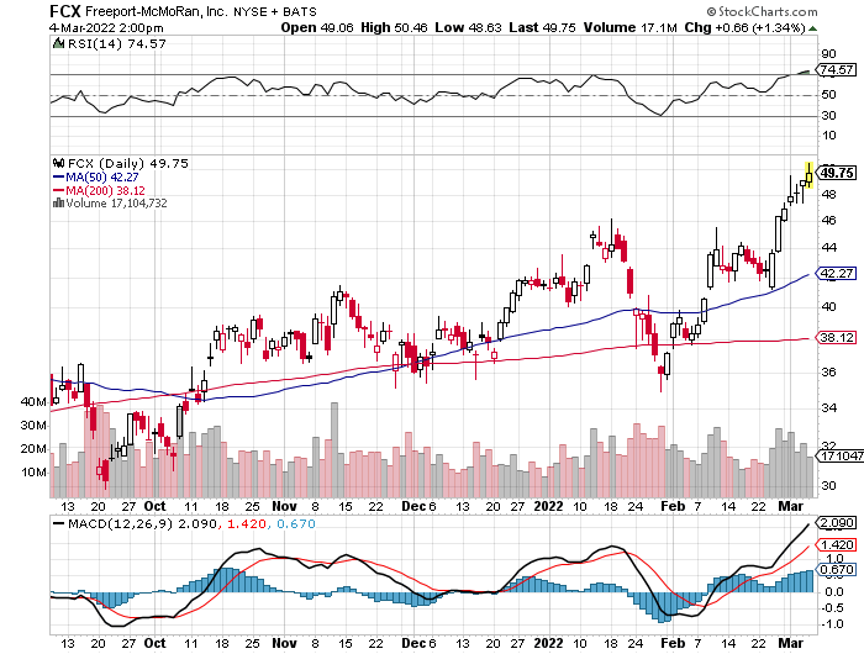

Legal Disclaimer
There is a very high degree of risk involved in trading. Past results are not indicative of future returns. MadHedgeFundTrader.com and all individuals affiliated with this site assume no responsibilities for your trading and investment results. The indicators, strategies, columns, articles and all other features are for educational purposes only and should not be construed as investment advice. Information for futures trading observations are obtained from sources believed to be reliable, but we do not warrant its completeness or accuracy, or warrant any results from the use of the information. Your use of the trading observations is entirely at your own risk and it is your sole responsibility to evaluate the accuracy, completeness and usefulness of the information. You must assess the risk of any trade with your broker and make your own independent decisions regarding any securities mentioned herein. Affiliates of MadHedgeFundTrader.com may have a position or effect transactions in the securities described herein (or options thereon) and/or otherwise employ trading strategies that may be consistent or inconsistent with the provided strategies.
This site uses cookies. By continuing to browse the site, you are agreeing to our use of cookies.
OKLearn moreWe may request cookies to be set on your device. We use cookies to let us know when you visit our websites, how you interact with us, to enrich your user experience, and to customize your relationship with our website.
Click on the different category headings to find out more. You can also change some of your preferences. Note that blocking some types of cookies may impact your experience on our websites and the services we are able to offer.
These cookies are strictly necessary to provide you with services available through our website and to use some of its features.
Because these cookies are strictly necessary to deliver the website, refuseing them will have impact how our site functions. You always can block or delete cookies by changing your browser settings and force blocking all cookies on this website. But this will always prompt you to accept/refuse cookies when revisiting our site.
We fully respect if you want to refuse cookies but to avoid asking you again and again kindly allow us to store a cookie for that. You are free to opt out any time or opt in for other cookies to get a better experience. If you refuse cookies we will remove all set cookies in our domain.
We provide you with a list of stored cookies on your computer in our domain so you can check what we stored. Due to security reasons we are not able to show or modify cookies from other domains. You can check these in your browser security settings.
These cookies collect information that is used either in aggregate form to help us understand how our website is being used or how effective our marketing campaigns are, or to help us customize our website and application for you in order to enhance your experience.
If you do not want that we track your visist to our site you can disable tracking in your browser here:
We also use different external services like Google Webfonts, Google Maps, and external Video providers. Since these providers may collect personal data like your IP address we allow you to block them here. Please be aware that this might heavily reduce the functionality and appearance of our site. Changes will take effect once you reload the page.
Google Webfont Settings:
Google Map Settings:
Vimeo and Youtube video embeds:
